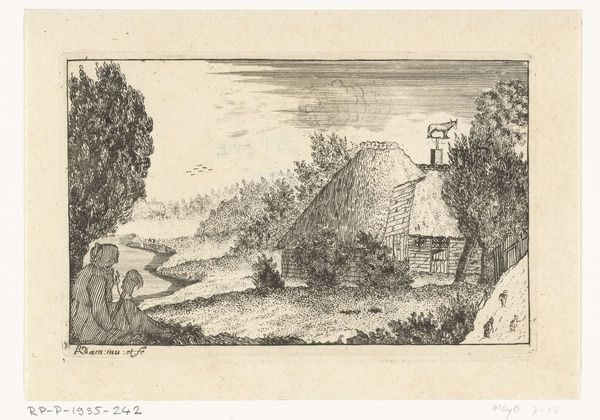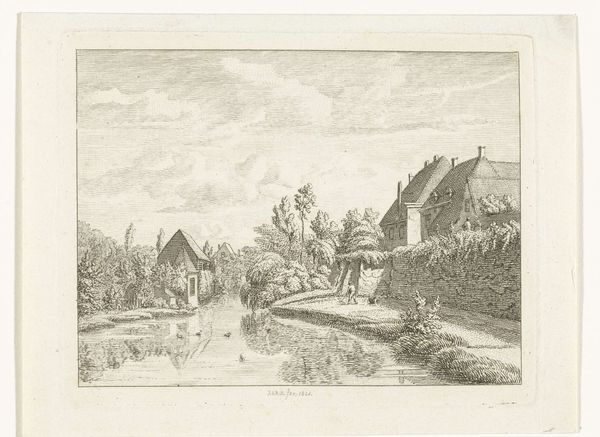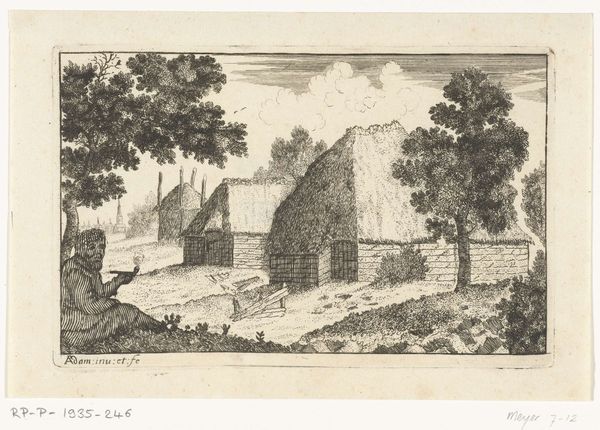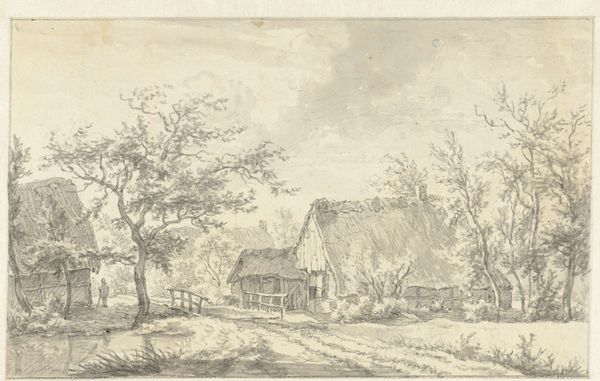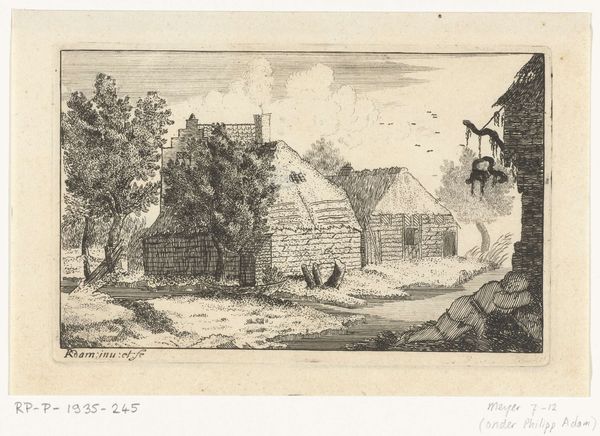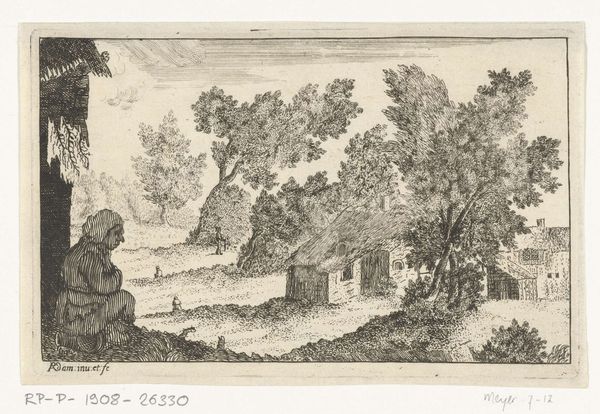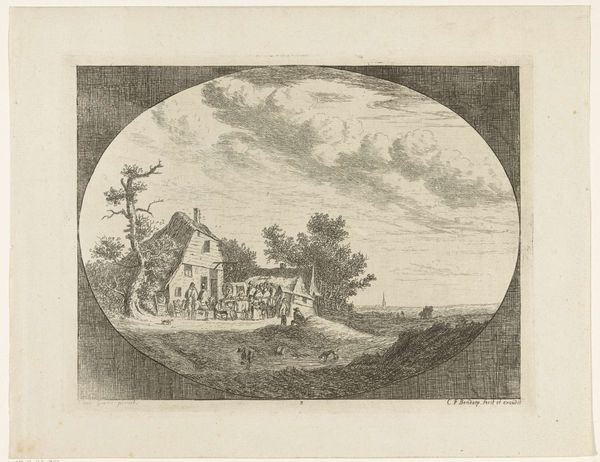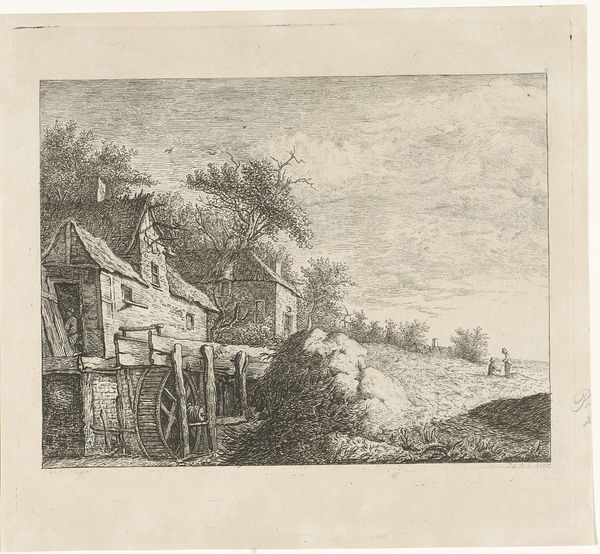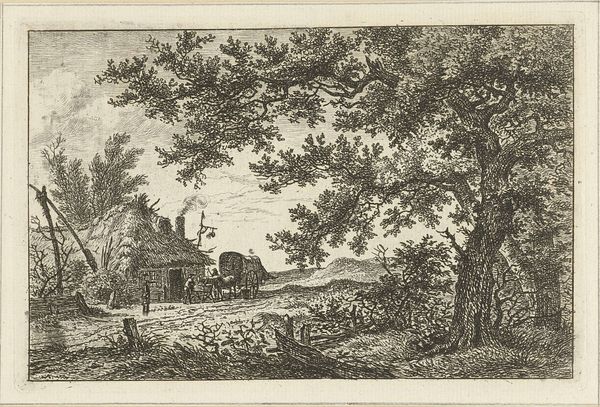
drawing, ink, engraving
#
drawing
#
dutch-golden-age
#
pen sketch
#
landscape
#
ink
#
engraving
Dimensions: height 103 mm, width 160 mm
Copyright: Rijks Museum: Open Domain
Editor: This drawing, "Boerderij met zittende man," or "Farmhouse with a Sitting Man," from the Dutch Golden Age, sometime between 1654 and 1720, is created with ink and engraving. I’m really struck by the stark contrast and almost photographic detail given the medium. What kind of societal implications were present when an artist creates a work like this? Curator: Well, consider the social context of the Dutch Golden Age. The rise of a wealthy merchant class led to an unprecedented demand for art. Pictures of everyday life, like this farmhouse scene, became incredibly popular, reflecting a growing sense of national identity and pride in the Dutch landscape. The very act of documenting these scenes elevates the everyday. Who got to decide what was considered a national treasure, and what images or messages were being omitted? Editor: That’s fascinating! So the rise of this art was a direct result of the burgeoning middle class and their desire to see themselves reflected? Curator: Precisely! This work normalizes and almost reveres rural life. Consider too the role of the art market itself. Galleries emerged, shaping taste and driving artistic production. Engravings also served to democratize art. Who had access to the original drawing, and who might instead purchase a reproduction, expanding access to imagery? Editor: So the engraving isn't just a technique; it’s a deliberate choice that alters the work’s public life and audience. That makes me wonder about how something similar happens in the digital age. Curator: Indeed. Think about who benefits, what’s being valued, and who gets to control and curate it. Editor: I will. Thanks! That gives me a new lens to view similar works.
Comments
No comments
Be the first to comment and join the conversation on the ultimate creative platform.
